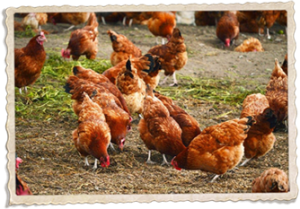You’re in the grocery store and a column of egg cartons stand before you. You see various words and phrases etched onto the cartons like Grade A or Free-Range. When you open the carton, some eggs are white, while others a soft brown.
Many people just pick up the first carton of eggs they find, assuming that all eggs are the same. But the opposite is, in fact, true. Eggs can vary in terms of taste and quality, so understanding the different types out there can help you find the right ones.
Egg Grading
All eggs are graded on a scale by the USDA, ranging from AA to B. The USDA grades eggs based on their quality, sanitary processing, appearance, and how firm the white is inside. In most cases, you’ll find grade A eggs at the supermarket, but you might be able to find others as well. These include the following:
- Grade AA: The freshest and highest quality eggs, they have a thick, clean shell with very firm egg whites
- Grade A: These are excellent quality eggs with a clean, smooth shell and thick egg whites
- Grade B: Grade B eggs have bumpy shells and thin whites—they are mostly used for baking and breaking stock
Cage-Free, Free-Range, and Pasture-Raised
After the grading scale, eggs will typically have one of three labels: cage-free, free-range, and pasture-raised. There is a lot of misconception regarding these labels. Often, people believe they all mean the same thing, but in all actuality, they hold very different standards regarding how chickens are raised.
Cage-Free
The term “cage-free” must be taken literally. While chickens are certainly free of their cages, they are not free to roam around. They are typically confined inside, with very little access to the outside world. Chickens that are crammed inside of a building are technically considered cage-free, meaning they are also more prone to disease and aggression.
Free-Range
Free-range eggs come from chickens who experience a greater level of freedom than cage-free. They can go outside and experience some fresh air, thus making their living situation far more humane. However, many free-range chickens are only allowed access to the outdoors for a short time, and they do not have a large space to roam.
Pasture-Raised
Pasture-raised eggs are produced in the most humane and ethical way. Chickens are kept outside for most of the day, and they have at least 108 square feet of space to roam. Pasture-raised chickens, then, have a healthier and happier lifestyle than those that are cage-free or free-range.
Shell Color
The final distinguisher between different types of eggs is the color of the shell. In most grocery stores, you will find white and brown eggs. However, if you’re raising chickens or if you’re buying from a farm, you may get blue or green eggs. The color shell you get depends on the chicken breed. While they all start off white, color pigments can be deposited on the egg as it travels through the hen’s oviduct. But the color pigments that are deposited on the egg are always determined by genetics. As such, a chicken that produces white eggs will never produce eggs that are blue. Regardless, the color of the shell does not impact the quality or the taste of the egg.
If you’re tired of the typical chicken eggs you get from the grocery store, considering raising your own flock of backyard chickens! Look through our website today to get started!

